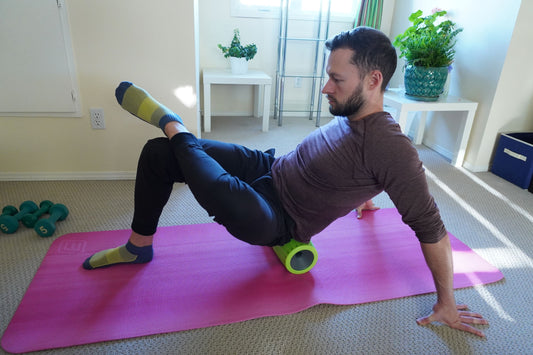It's 2021 and almost everyone has a phone. Not only does everyone have a phone, but nearly everyone has a smart phone! This means that we do a lot more than calling on it. For most people, especially in younger generations, calling is the least common task that people perform on their phones. Surprisingly, people spend an average of 4 hours per day on their cell phone.
iPhones actually track this statistic each week and send you a report on your average use if you enable it. You should take a look! The amount of time you use it each day may shock you.
What’s even more shocking is the physics of how much strain is put on your neck with a posture of looking down at your phone. The average human head weighs 12 pounds and the pressure on your neck is minimal when you are in an upright position with your ears in line with your shoulders, but for every 15 degrees that your neck bends forward, with gravity acting on it, the amount of pressure acting on your neck doubles. That means that when you are looking down at your phone and your neck is about at a 60 degree angle, the pressure on your neck approaches 60 lbs. That’s more than 4 bowling balls! And we put that much strain on our neck for an average of 4 hours per day! No wonder the term “text neck” was coined in 2018, referring to the rise of neck pain related to cell phone use.
As phone use rises, the prevalence of neck pain also rises. The prevalence of neck pain approaches 75% of the population in some studies. 50% of the population will experience a clinically important episode of neck pain, leading neck pain to become the 4th leading cause of disability worldwide. 30% of those suffering from neck pain will develop chronic symptoms.
This is why it’s so important to relieve the muscular tension that we cause, strengthen postural muscles, and maintain awareness of your posture throughout the day.
Treatment for and prevention of neck pain has three main components.
1) Relieve Muscular and Fascial Tension
Over my 11 years of PT practice, probably the exercise that I’ve prescribed the most is the 5 way neck stretch. It only takes a couple of minutes to perform and it hits the 3 main muscles that cause the majority of neck tightness. Hold each position for 30 seconds. If you have time, perform 2 sets.



Release muscular and fascial tension with RAD tools.
The Rad Roller combined with the block is one of my favorites for pain and tension at the base of the skull. Set the Rad Roller on the block and lay down on it with the Roller touching the spots that are sensitive and tight. Challenge yourself to not multi-task while you do this. Don’t use your phone. Just close your eyes and focus on relaxing.

In order to allow yourself to sit up straight, you need more mobility in your thoracic spine. I use the Centre and Axle for this.
Using the Centre, place it in the center of your spine anywhere from your shoulder blade level, down to just below your shoulder blades. Use it where you feel restricted the most. Play around with different areas. Focus on relaxing on it so that your arms relax down toward the ground. Relax your head down to the ground as well. You can even roll your spine up and down on it. It’s easier to do this if you cross your arms in front of you.



You can also use the Axle to stretch your spine and shoulders, laying on it the same way as you would the Centre. You can even roll up and down on it with your spine in the center notch of it if you can tolerate the firmness of the Axle. If you can’t tolerate this, the Centre is more comfortable.

2) Strengthen Postural Muscles
Here’s a collection of some of my favorite, simple postural strengthening exercises.
Rows
No Moneys
Prone Angels
Pulley Angels
3) Be Aware of Your Posture
There are several strategies for this, but the most important thing is that you maintain a constant awareness of your posture. It’s far too easy to slouch forward, get lazy, and find yourself right back in the same bad posture that gave you pain.
When you are looking at your phone, hold it up higher so you aren’t looking down. Limit your time on your phone.
Make sure you have an ergonomic setup at your computer with the screens straight in front of your eyes so you aren’t looking down, up, or to a side, have a chair with good lumbar support and is comfortable, and have your keyboard at a comfortable angle so you aren’t holding your arms up or leaning forward.
There are even devices like the Upright Trainer that will help remind you if you aren’t holding good posture.
In the end, it all comes down to your determination to take care of your spine, which is an ongoing process that takes intention.




















